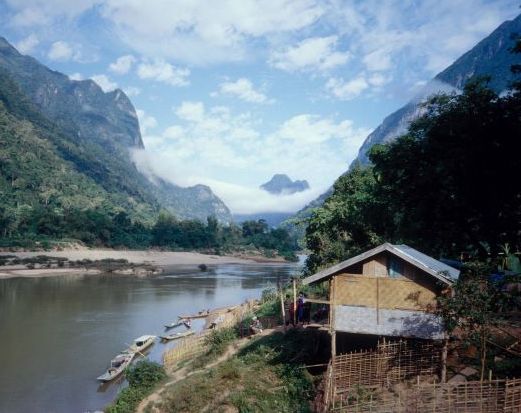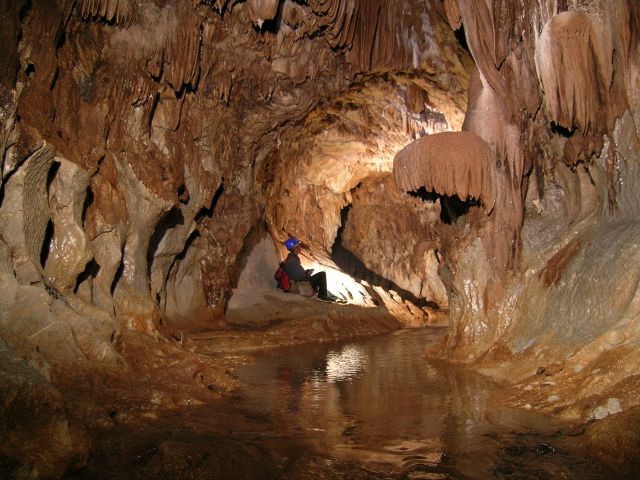



    |
Northern Lao - European |
Laos 2003/04 Expedition to Luang PrabangExpedition time: 21.12.03- 8.1.04The purpose of this expedition was to check the potential for caves around the city of Luang Prabang. In total 26 caves with a total length of 4.1 km were surveyed and mapped. Most of them around 100 m of length. Luang Prabang Area Most of the caves in the vicinity of Luang Phrabang have easy access due to the well developed infrastructure near to the provincial capital. Furthermore the city of Luang Phrabang is a focal point of the local tourism. Consequently, caves play an important economic role. The Pak Ou caves are the most known tourist caves of Laos. They are situated on the western Mekong shore opposite the confluent with the Nam Ou, approximately 25 km upstream the Mekong from Luang Phrabang. The caves were visited by foreigners since 1867, when Douart de Langré first explored the Mekong. Both caves contain thousands of Buddha statues of different size. The statues are mainly made from wood. They are covered by leaf-gold in many cases. Luang Prabang has two large 30 km long and 1,000 m high limestone plateaus located to the east and south that stretch from NE to SW direction. The search for caves was intensified around the plateaus and the Mekong. The longest cave Tham Loum (Wind cave, 1.6 km) is found in the remote village of Longkhoay in the southern Phou Phaxang Noy plateau. The cave follows the axis of the limestone ridge from NE to SW. It consists of a single rift-controlled meandering gallery with no significant branches. Except of a small entrance with a strong current of air and few other crawls the entire passage is of walking size. The second longest cave is the multi level river cave Tham Pha Man (405 m) north of Luang Prabang at the Mekong near Ban Man Phone Sai. A steeply descending but climbable passage gives access to a complicated maze of inter-connected phreatic passages on several levels. While the upper level of passages are decorated with calcite formations the lowest level reaches the static karst water level. The eastern plateau of Phou Longhouay has only few short caves of 50-80m at its northern end at the Nam Pa river and on the plateau near Ban Long Kout. The Chompet district on the west side of the Mekong hosts the after the nearby monastery named Tham Khou Ha Sakhalin (120 m). Furthermore an overnight trip was done 25 km upstream the Nam Kham river to Tham Kengkong (Crystal cave, 373 m) named after the nearby village. The caves in the Luang Phrabang area surprise by its great variety from straight passages to large chambers and mazes mostly located high in the ridges of the mountains. Often CO2 is present. The highest potential seems to be at Ban Longkhoay with 6 other caves mentioned by the villagers. |